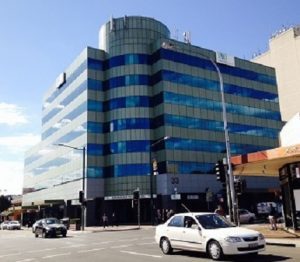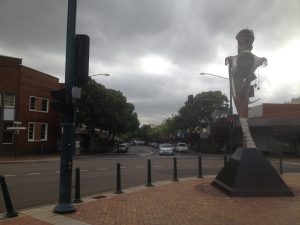 A new project designed to help reduce congestion in our suburbs has been launched in South West Sydney.
A new project designed to help reduce congestion in our suburbs has been launched in South West Sydney.
Data collected from pedestrian smartphones and cutting-edge traffic-counting technology will be used to track patterns of movement in a bid to better plan cities and build infrastructure where it is most needed.
Federal Minister for Urban Infrastructure and Cities Paul Fletcher said the Smart Pedestrian Project, funded under the Turnbull Government’s Smart Cities and Suburbs Program, would help Liverpool City Council make better decisions about transport and urban planning by measuring real-time pedestrian and vehicle movements around the CBD.
“Traffic congestion is a major problem in many of our urban centres, including Liverpool, and this project is a great example of how we can better use technology and data to make our cities better places to live and work,” Mr Fletcher said.
“The data Liverpool City Council and University of Wollongong collect for this project will make a big difference in how we plan transport and pedestrian networks for this city. It’s also a great opportunity for other cities to see how the project rolls out, with a view to adapting the technology to their needs.
“This project is a great example of how the Smart Cities and Suburbs Program encourages collaboration between local governments, research organisations and the private sector to deliver a solution that can be applied locally and shared around the country.”
Liverpool Mayor Wendy Waller said it was exciting to work with University of Wollongong and IT Integration Company Meshed to carry out the $240,000 project.
“We call Liverpool the seven-minute city, because that is how quickly you can walk between major landmarks,” Cr Waller said.
“You could almost say Liverpool has been a smart city since it was laid out in 1827, but this brings it to a new level. The number of cranes around the CBD shows how rapidly we are growing, with more housing, offices and educational facilities.
 “Council’s Civic Place redevelopment, which will include the new University of Wollongong campus, is expected to lead to 30,000 extra pedestrian movements per day.
“Council’s Civic Place redevelopment, which will include the new University of Wollongong campus, is expected to lead to 30,000 extra pedestrian movements per day.
“We will be using the data to plan future pedestrian and vehicle movements throughout our city to ease congestion, provide better transport options and improve health and safety.”
University of Wollongong vice-chancellor, Professor Paul Wellings, said it was very satisfying to be able to bring the university’s academic and technological expertise to the partnership.
“The University of Wollongong prides itself as an institution that sits right at the top of world rankings, but also retains a strong focus on the communities in which it operates,” Prof Wellings said.
For more information visit: cities.infrastructure.gov.au/smart-cities-program.

Carolyn Harle
Thanks Deb xx.